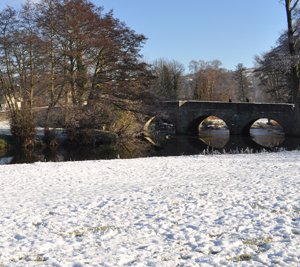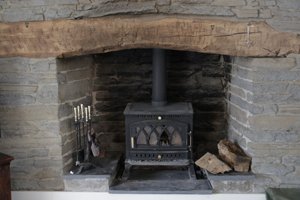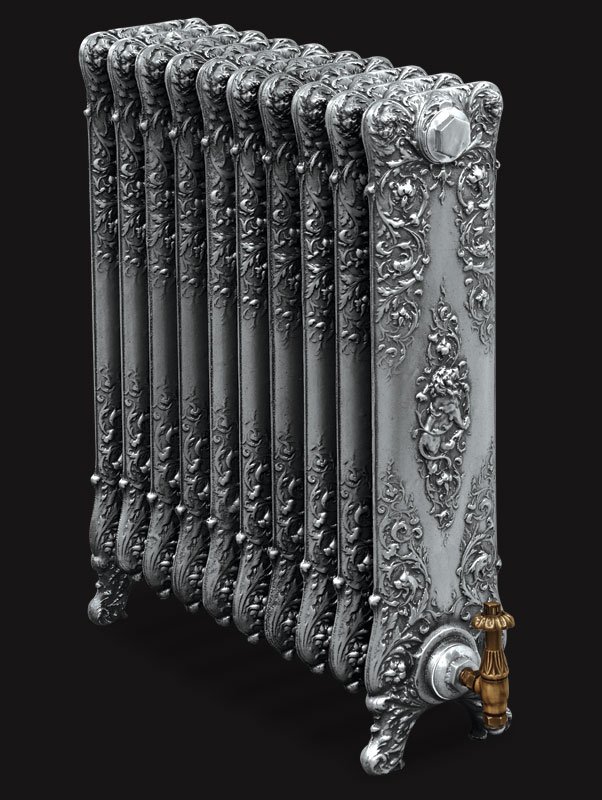Why insulate your loft?
Heat rises, and in an uninsulated home a quarter of your heat is lost through the roof. Insulating your loft is simple and the most effective way to save money on heating bills. It’s a simple DIY job that most people could do. Loft insulation is effective for decades so it is a very worthwhile investment. If access is easy and your joists are regular, you can use rolls of mineral wool insulation. The first layer is laid between the joists – then another layer is cross-laid at right angles to cover the joists and make the insulation up to the required depth. If you want to use your loft for living space, you can insulate the roof of the loft instead of the floor by fixing rigid insulation boards between the roof rafters. Boards must be carefully cut to the right size so that they fit snugly between the rafters as any gaps will allow heat to escape. They can then be covered by plasterboard. Rafters aren't usually very deep, so to get the best result you may need to insulate over them as well using insulated plasterboard. If there isn't room to do this, make sure you use the best performance insulation board you can afford.
If your loft is hard to access, you can have insulation installed by a professional who will blow in a type of foam insulation which is fire-retardant and made of cellulose fibre or mineral wool. This shouldn’t break the bank either.
Draughtproofing between floorboards will have a similar dramatic effect of making your house much warmer and less draughty. There are a number of different products on the market available to do this all of which are reasonably priced and effective. These consist of methods of filling the gaps through which the cold air can circulate.
To draughtproof around gappy doors and windows, buy draught-proofing strips to stick around the window frame and fill the gap between the door and the door frame – these are available in most DIY stores. You need to make sure that your doors and windows will still close afterwards and may have to trim the insulation back to ensure this works. For rooms you do not use much or heat such as a spare room or garage, it is worth keeping the door closed and draught proofing around it in exactly the same way to conserve heat.
Does your boiler need servicing?
Boilers account for around 55% of what you spend in a year on energy bills, so an efficient boiler makes a big difference to keeping warm and controlling your energy costs.
Replacing an old gas boiler with an A-rated high-efficiency condensing boiler and improving your heating controls will significantly cut your home's carbon dioxide emissions - and could save you several hundred pounds a year despite the initial outlay.
Even if your boiler does not need replacing, regular servicing of your boiler is important as it ensures that the boiler is working to the specifications designed by the boiler manufacturer and keep it working at it’s optimum efficiency. It will also help prolong the life of the boiler and reduce the risk of faults and expensive repairs down the line.
Make sure that when setting the timer on your boiler, you adjust this each time the weather changes. So for example you might have the heating on for just an hour twice a day in the mid-later autumn, rising to 2 hours in the morning and 6 hours in the afternoon/evening in mid winter. However once the seasons change again and spring kicks in with it’s warmer days and milder nights, make sure that you adjust the timer accordingly and reduce the number of hours that your heating is on.

Radiators, Open Fires and Stoves
There are several companies that will renovate your original antique Victorian radiator, however, these renovations are often only a partial success. It is possible to get the radiator working again and drain out any contaminated water, however a genuine antique radiator will never be as efficient and effective as reproduction Victorian cast iron radiators. In our experience, although they may look attractive and you will feel good about preserving the original features in your Victorian house, they are worthwhile mainly for decorative purposes.
It is important to use radiators that give the correct heat output in each room of your house – otherwise rooms will be either too hot or too cold and you will be forever fiddling with the controls and potentially wasting money. To check the correct heat output for each room, use a British Thermal Unit (BTU) calculator. This will give you the BTU value required which you can then match against a new radiator you may wish to purchase. There are many reproduction Victorian cast iron radiator designs that are heat efficient and look really attractive and fitting to period properties, as well as heat efficient plain column radiators which look good anywhere. These make an eye-catching, authentic feature out of something functional.

Wood burning stoves are much more heat efficient than open fires and can be just as attractive albeit in a different way. Although a roaring open fire in a large open Victorian or period fireplace may look good and provide lots of heat, many are either too hot once they fully kick in, or produce not enough heat and still require radiators to be on in the room. However all open fires have one thing in common - they are the least energy efficient way of burning wood. The average open fire is only 15% efficient, so for every £1 spent on fuel, it only gives you 15p worth of heat. In addition, a fireplace draws any heat from the room up the chimney when it is not lit. If you want to keep your open fire and your fireplace is large, you should get a lid fitted to it to keep the cold out when it’s not lit. If you wish to cut your wood bill however, a wood burning stove is the best way forward.
Today, there are high efficiency, glass fronted wood burning stoves, that provide around four times as much heat output for your money compared to the average open fire. Just enclosing the fire causes the temperature of combustion in a stove to rise to around 600°C, as opposed to just 270°C with an open fire. Some wood burning stoves are up to 85% efficient, and will therefore use around 80% fewer logs to generate the same amount of heat as an open fire. Antique renovated wood burning stoves are both beautiful and heat efficient and will enhance the interior of any living space.
It is important that if you are regularly using your Victorian fireplace, either with an open fire or a wood burning stove, you get your chimney swept. This will not only prevent chimney fires but will also reduce the risk of dangerous fumes seeping back into the room. A fire needs air to burn so that as a fire burns in your grate, the air from the room gets pulled through the grate. As the fire burns, it releases gases which rise and escape up the chimney and into the atmosphere. As these gases travel through the chimney, soot begins to accumulate on the walls. Soot contains a flammable substance called creosote. With a narrow chimney that is seldom swept, the soot and creosote could begin to obstruct the chimney and as creosote is flammable, this could cause a chimney fire. A blocked chimney has the added danger of poisoning the air - potentially harmful gases need to escape from the room somehow and if it’s not up the chimney, it will be into the room and rest of the house. A clear chimney with good air circulation allows the fire to burn efficiently as the fire sucks in more air from the room through the grate, in order to fill the space that has been left through the hot air rising up the chimney. Without this continuous supply of air, the fire would burn itself out.
Fireplaces in Victorian homes are numerous; an original Victorian home may have a period fireplace in every room. If like many homes you have redundant fireplaces and still wish to retain the original character of the property by keeping the fireplace, it may be a good idea to invest in a chimney balloon. A chimney balloon stops warm air going up your chimney and draughts coming back down.
Another cheap way of keeping warm is of course to buy a higher tog duvet and/or spend more time in bed!
For any further assistance with any aspect of choosing a radiator or antique wood burning stove, please contact The Victorian Emporium and we will be pleased to help you.
For more tips and advice from some of our customers, have a read of our article "Things I wish I'd known before buying my period house". You can read our ultimate guide to period property renovation here.



Be the first to add a comment...